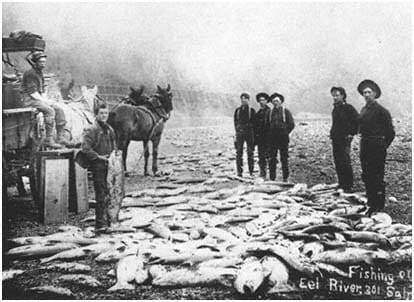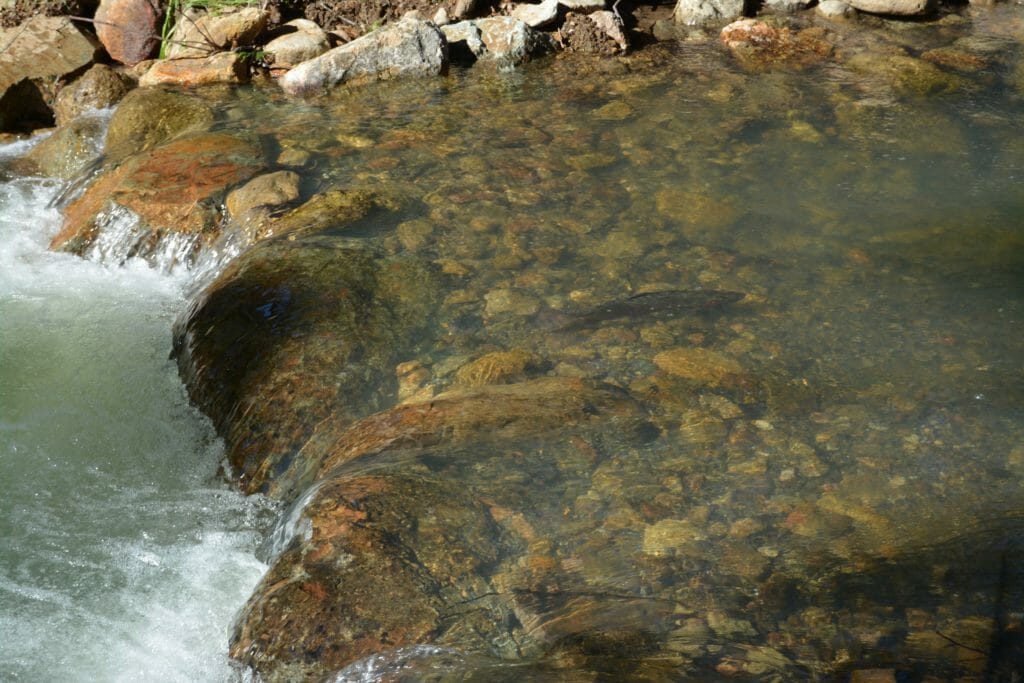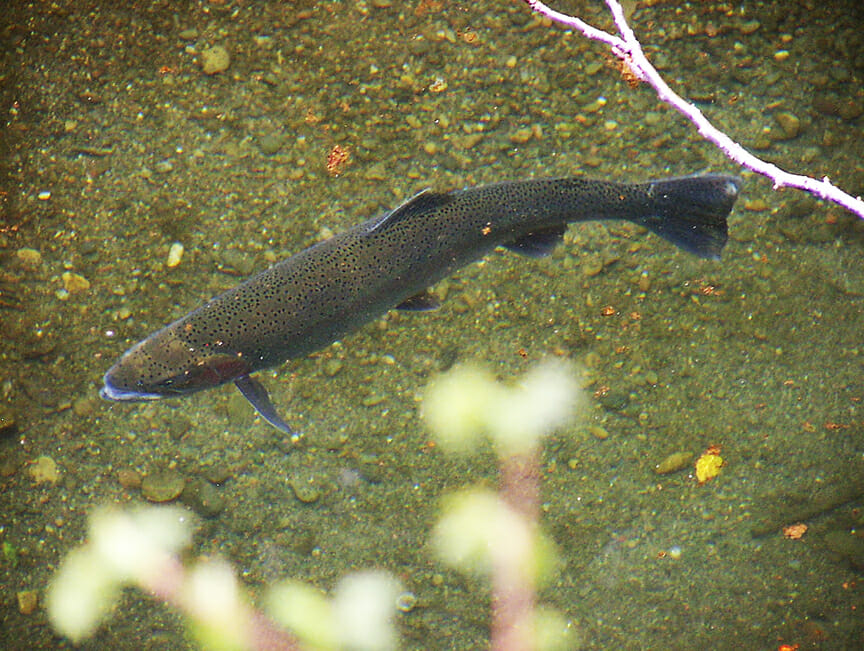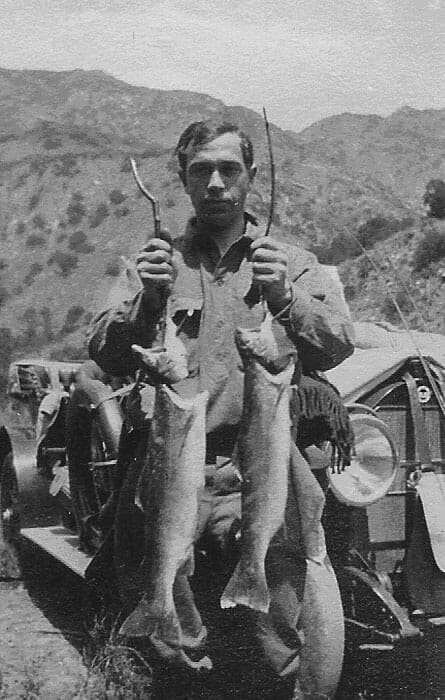Trout Unlimited works with a wide variety of partners in California to conserve, protect and restore trout and salmon populations and their habitats. For many years, one of our primary partners in our effort to recover native Coho salmon and steelhead in coastal watersheds was the Center for Ecosystem Management and Restoration (CEMAR). CEMAR closed shop in 2016—and several of its staff then came to work for TU, becoming our Conservation Hydrology team.
Prior to its close, CEMAR was a leading provider of scientific data and analysis related to salmonid populations and the key variables affecting their coldwater habitats, in particular streamflow. As part of this function CEMAR hosted some of the most authoritative and accessible information compiled about steelhead in the San Francisco Bay Area, the Central, South-Central, and South Coastal regions, and the legendary Eel River watershed. Much of that content was written and compiled by our friend and colleague, Gordon Becker, and we dedicate this page to him.
These materials are now collected on this page and TU will continue to host this information going forward.
Current Status and Historical Distribution of Steelhead and Rainbow Trout Streams
Eel River Watershed
The Eel River flows northwesterly, entering the Pacific Ocean about 13.5 miles south of Eureka. It is the third largest river system in California and drains a watershed of about 3,684 square miles (DFG 1997). The entire watershed contains a total of about 3,488 stream miles and the mainstem Eel River consists of about 200 stream miles. In 1997, staff from DFG cited the Eel as historically the third largest producer of salmon and steelhead amongst California watersheds (DFG 1997a).

Lower Eel
Middle Eel
Middle Fork Eel
North Fork Eel
South Fork Eel
Upper Eel
Van Duzen River
Greater Bay Area
Five species of Pacific salmon (genus Oncorhynchus) are known from watersheds tributary to the San Francisco Estuary, exclusive of the Sacramento and San Joaquin rivers and their tributaries that drain the Central Valley of California (Leidy 2004). Salmon species either historically or recently recorded from Estuary streams include coho salmon (O. kisutch), chinook salmon (O. tshawytscha), chum salmon (O. keta), pink salmon (O. gorbuscha), and the non-anadromous and anadromous life-history forms of rainbow trout (O. mykiss). Recent status reviews indicate that natural populations of coho and chinook salmon and steelhead within coastal California have declined dramatically over the last 50 years, and populations apparently are continuing to decline in other regions (Brown et al. 1994; CDFG 2002; Myers et al. 1998; NMFS 1996, 1999, 2001). Status reviews have assisted the National Marine Fisheries Service in the identification of over 50 listed Evolutionary Significant Units (ESUs) for West Coast salmon and steelhead, including three ESUs that encompass the San Francisco Estuary.
Anadromous rainbow trout, or steelhead, occur in California from the Smith River south along the coast to San Mateo Creek, San Diego County, and in streams of the San Francisco Estuary and Central Valley (Moyle 2002). Tributaries to the San Francisco Estuary support the winter (ocean-maturing) steelhead ecotype, as well as non-anadromous, or resident, forms of rainbow trout. Historical records [indicate] the widespread occurrence of steelhead throughout the Estuary, but there is scarce information regarding the number of adult spawning fish.
Alameda County
Contra Costa County
Marin County
Napa County
San Francisco/San Mateo Counties
Santa Clara County
Solano County

Sonoma County
All Bay Area Counties
Central Coast
Many of the small coastal streams between San Francisco and Point Conception provide suitable habitat for steelhead. Some of these streams, such as San Gregorio Creek (San Mateo County), the Pajaro River (Santa Cruz County), the Carmel and Big Sur Rivers (Monterey County), and the Santa Ynez River (San Luis Obispo County) have current steelhead populations whose numbers are substantially depleted from estimated historical averages. However, extensive restoration efforts, such as the removal of San Clemente Dam and the conservation of a former golf course as county open space on the Carmel River, provide reason for optimism that anadromous O. mykiss can persist here.
San Mateo County
Santa Cruz County

Pajaro River
Monterey County
San Luis Obispo County
Southern Coast
Steelhead have been well documented in coastal streams between Santa Barbara and the border with Mexico, especially prior to the 1960s. Today, these populations (the southern coastal distinct population segment) are ESA-listed as Endangered. Remnant populations of native O. mykiss remain in the headwaters of some of these drainages, and adult steelhead are found occasionally in the lower reaches of streams such as the Ventura and Santa Clara Rivers and San Juan and Trabuco Creeks in Orange County.
Santa Barbara County
Ventura County



